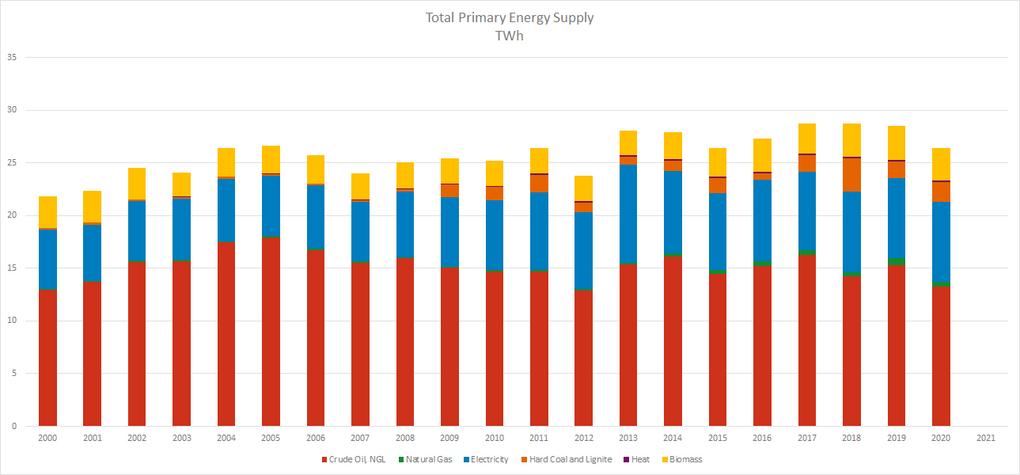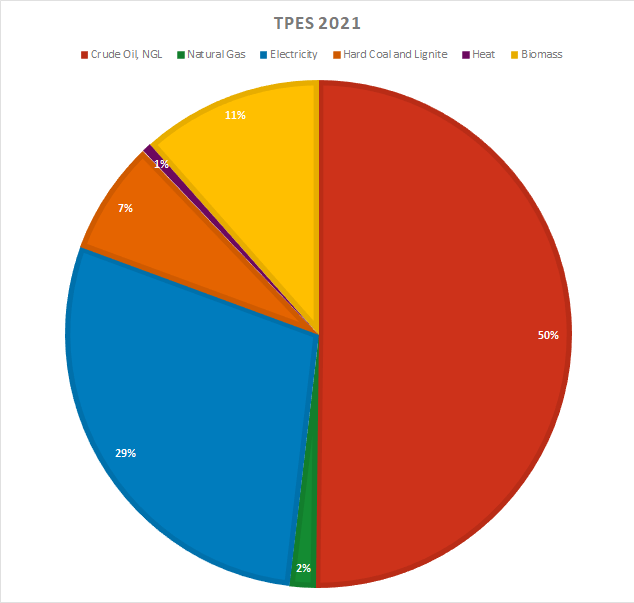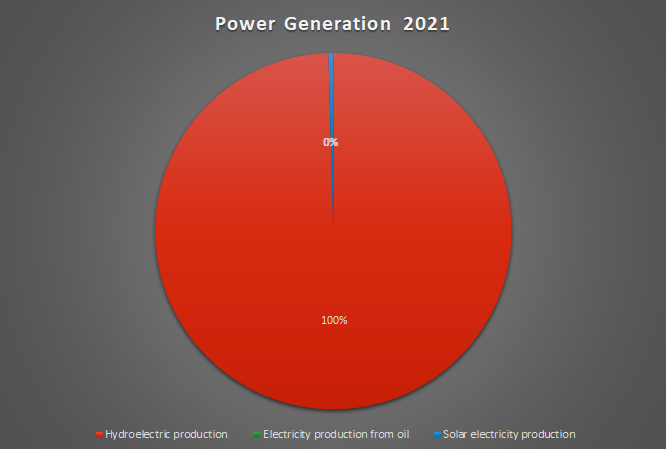Energy Supply
Resources
Albania has modest oil reserves (33 Mt) but sizeable lignite reserves (522 Mt), despite the material's high (over 3%) sulfur concentration. It has a substantial renewable energy potential, with estimates for hydropower of more than 4.5 GW, solar power of up to 2.3 GW, and wind power of 7.4 GW.
Oil, Gas and Coal
Oil is the largest energy source to supply Albania, followed by electrical energy. The oil production has tripled between 2004 and 2014. Most of this production is exported. The natural gas and coal production are marginal. Coal is produced from 8 mines (Memaliaj, Mborje-Drenove, Gore, Verdove, Alarup, Krabe, Mushqeta and Priske) and barely imported.
Modernization is required for the two refineries, which are located in Ballshi (17 800 bbl/d) and Fier (8 500 bbl/d) and only operate at about 20% of their capacity (0.25 Mt produced in 2019). Due to a reduction in crude oil supplies, the Ballshi refinery stopped running in 2017 and January 2019. As a result, Albania's primary source of oil product supply is imported (1.1 Mt in 2019). 2011 saw the opening of the 100 000 t/year Porto Romano biodiesel refinery. Because Albania lacks a regulatory framework for biofuels, the whole production of the refinery is sold to the EU market.
Electricity
Albania's energy sector is primarily based on hydropower, which accounts for more than 90% of the country's electricity production. The country also has significant potential for other renewable energy sources such as wind, solar, and biomass. In recent years, Albania has been working to diversify its energy mix and increase the share of renewable energy in electricity production. The country is also working to improve energy efficiency and reduce greenhouse gas emissions.
The three biggest hydropower stations on the Drin River—Koman (600 MW), Fierz (500 MW), and Vau I Dejes—provide 96% of the 2.3 GW's hydroelectric capacity (250 MW). In addition to Statkraft's 256 MW Devoll project, which was commissioned between 2016 (73 MW) and 2020 (184 MW Moglic phase), the hydroelectric capacity has increased by 48% since 2010 (+702 MW). Albania has two inactive oil-fired power plants: 98 MW Vlora and 159 MW Fier (mothballed before commissioning in 2012). The goal of the government is to revitalize and gasify Vlora. It announced a concession tender for the power plant in January 2019 but canceled it at the beginning of 2020 because none of the accepted offers fit the criteria.
Source: www.enerdata.net
Last update: 07 2023



